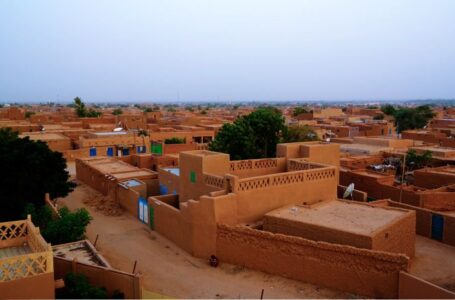Canadian leader meets with Trump at Mar-a-Lago to discusses energy relationship
The Ukraine war is forcing migrating eagles to change their flight paths, scientists say


Greater spotted eagles are already a species under threat. Now, scientists have found that they have been facing yet another danger: the war in Ukraine.
Eagles have been exposed to conflict events while migrating through Ukraine, forcing them to deviate from their usual flight path, according to a study published Monday in the journal Current Biology.
Listed as “vulnerable” by the International Union for Conservation of Nature, greater spotted eagles have been largely eradicated from western and central Europe, according to the study.
However, Polesia, a large wetland region that borders Poland, Belarus, Ukraine, and Russia, remains a stronghold for the species.
On March 1, 2022, a week after Russia invaded Ukraine, the first of 21 tagged greater spotted eagles crossed into Ukraine on its usual migration, according to researchers from the UK and Estonia.
Using conflict data and GPS tracking, the researchers quantified the impact of the conflict on the migratory behaviour of 19 eagles who were passing though Ukraine northward to breeding grounds in southern Belarus between March and April 2022.
The study authors found that the eagles diverted significantly from their usual flight path when compared to pre-conflict migrations between 2019 and 2021, with the eagles flying further and less directly to breeding grounds.
While the researchers did not have direct observational evidence to determine the stimuli the birds could respond to, they thought noise and light from military activities could have affected their behavior.
The deviations were found to be greater at areas where the route of migration coincided with more military activity, but it differed for each bird due to varying exposures and responses to conflict, according to the researchers.
Due to greater deviations, the birds had to travel further and their migrations also took longer to complete.
Females, for example, spent an average of 246 hours travelling to breeding grounds, rather than the pre-conflict time of around 193 hours, according to the study.
The eagles travelled 85 kilometers (53 miles) further on average and, in an extreme case, one bird flew an extra 250 kilometers (155 miles) further compared to previous years, Russell said.
Males were found to travel more slowly, averaging a speed of around 7.66 meters (25 feet) per second, rather than the pre-conflict average of around 9.75 meters (32 feet) per second.
The researchers observed no difference in migration performance and deviation patterns outside of Ukraine, according to the study.
Potential breeding risk
The other significant finding was that the birds were making less stopovers than in previous years.
Stopover sites are essential places for the eagles to get food, water, rest and refuel, and shelter from poor weather during their long journeys, according to researchers.
While 18 tracked individuals – 90% of the tracked eagles – made stopovers in Ukraine while migrating between 2018 and 2021, only six made stopovers in 2022.
In the years before the conflict, 11 of the eagles used common stopover sites in Ukrainian Polesia, but these sites were not used at all in 2022.
“The combination of these two things, having to fly forever and expend more energy, and the reduced ability to recover that energy, is something that we think will have had sublethal fitness costs, which might have carried over into the breeding period that year,” Russell added.
Reduced fitness and the delayed onset of breeding due to spending more time recovering from the journey could reduce breeding success, which is already relatively low in the population, as well as impact chick provisioning and the fledgling date of young birds, according to the study.
“I think it’s very important to understand the different stresses that the environment is facing as a result of conflict so that in a post-conflict setting, we can better support not just greater spotted eagles but the wider ecosystems as well to recover,” Russell said.
Pettorelli, who was not involved in the study, added that understanding what affects the eagles’ survival is “key” to ensuring they have a future.
“More broadly, human conflicts are on the rise globally, stressing the need for more research on the impacts of conflicts on biodiversity and, where possible, for the development of effective mitigation policies,” Pettorelli said.
Ukraine accused Russia of “ecocide” after suffering an environmental catastrophe in July due to the collapse of the Kakhovka dam in the south of the country that led to more than 100 people being killed, as well as the destruction of farmland and nature reserves.
Russell said the war in Ukraine is “really raising the profile of some of the environmental issues caused by conflict. And it’s not just in Ukraine. This is something that’ll be happening to different extents at other conflict zones as well.”











